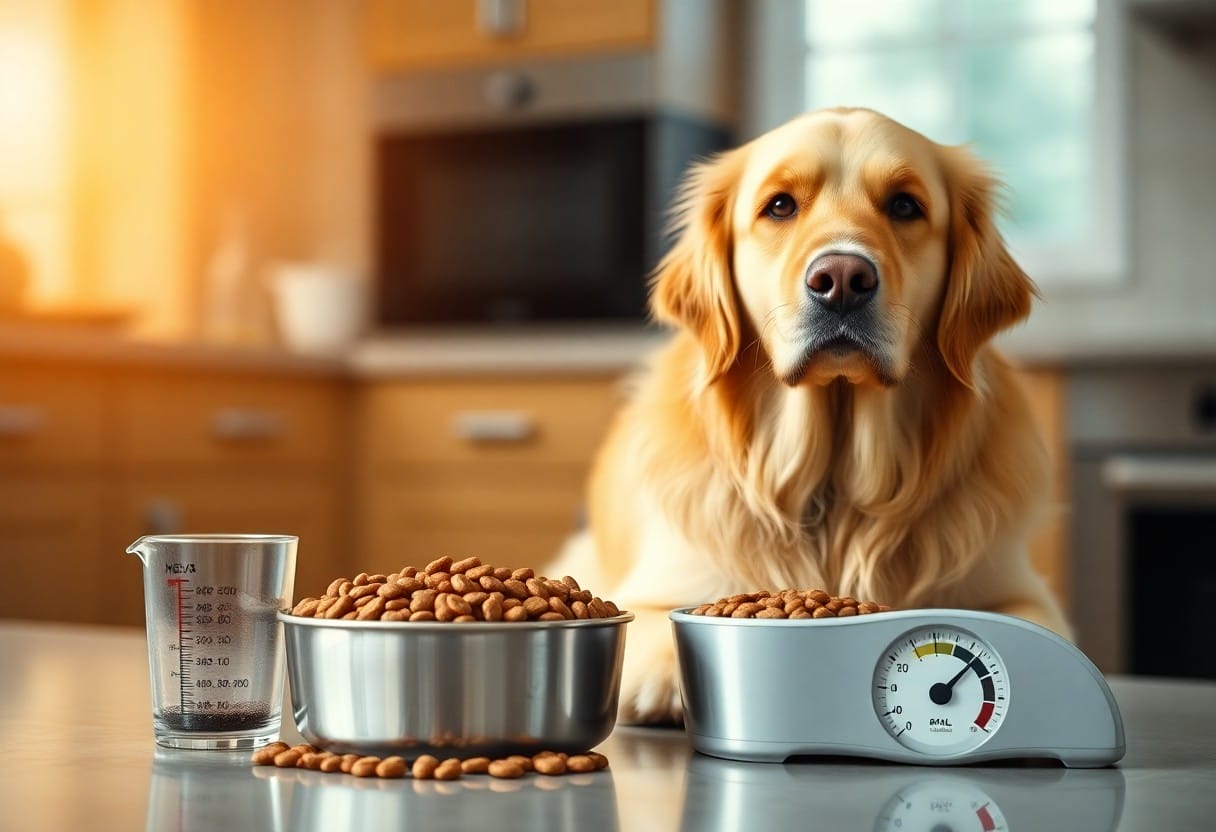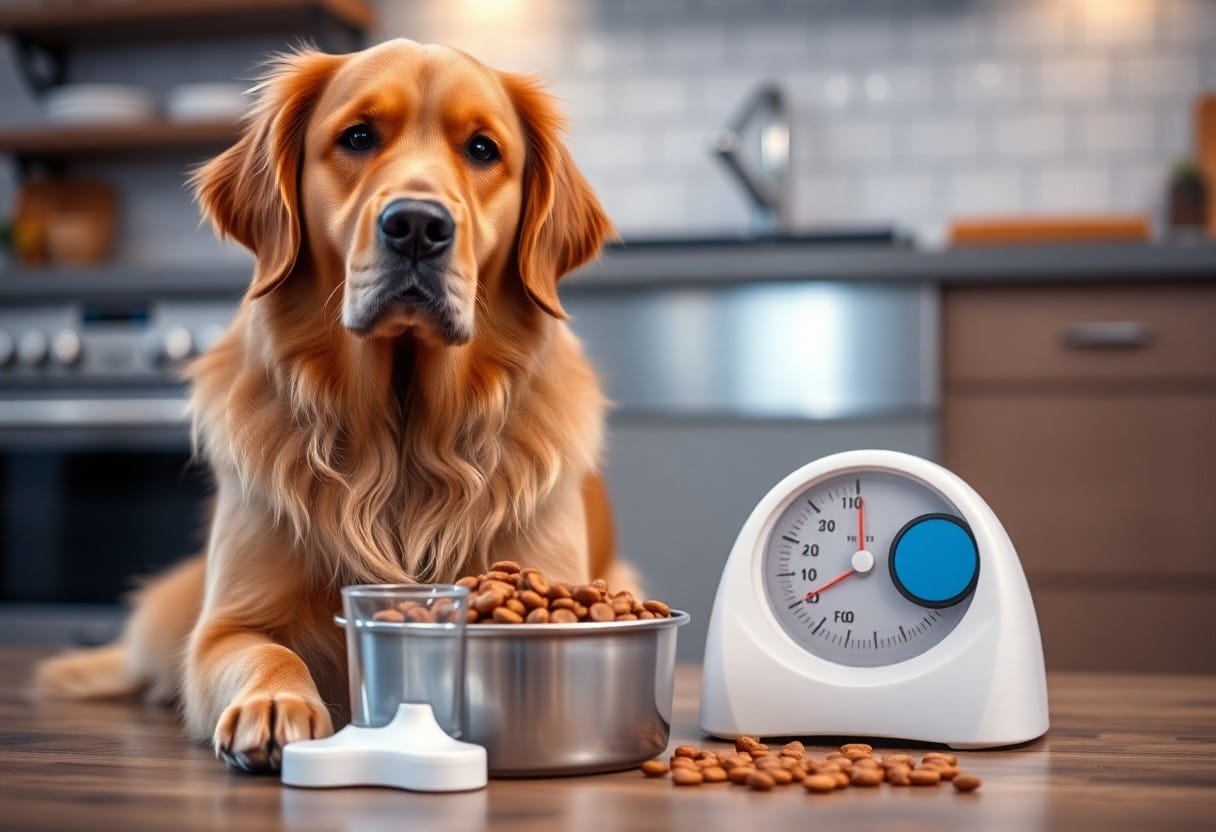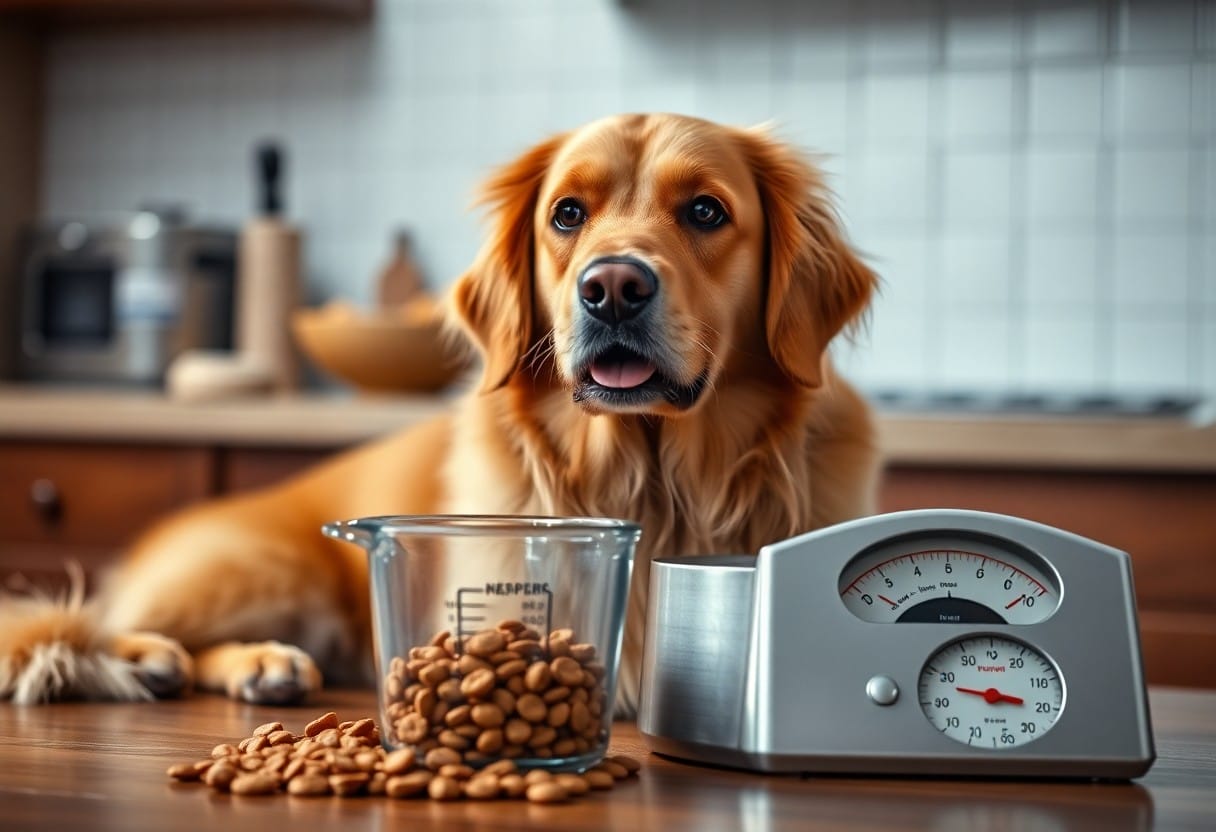
The Science of Portion Sizes - Are You Overfeeding Your Dog?
Share
You might be unknowingly overfeeding your dog, which can lead to serious health issues like obesity and diabetes. Understanding the science behind portion sizes is important for keeping your pet healthy and happy. Many dog owners misjudge the appropriate amount of food based on outdated guidelines or a lack of knowledge about their dog's specific needs. In this post, you will learn how to evaluate your dog's dietary requirements and ensure you provide the right portion sizes to promote a long and thriving life.

Key Takeaways:
- Understanding Portion Control: Proper portion sizes are vital for maintaining a healthy weight in your dog, preventing obesity and related health issues.
- Measuring Food Accurately: Using standard measuring tools can help ensure that the amount of food given matches the recommended serving sizes based on your dog's size, age, and activity level.
- Consulting Professionals: Regular check-ins with veterinarians or pet nutritionists can provide personalized guidelines for feeding and help adjust portions as your dog's needs change.
Understanding Portion Sizes
As you navigate the intricate world of dog care, understanding portion sizes becomes crucial for maintaining your dog's health and well-being. Properly managing how much food you provide can help manage your pet's weight, promote optimal nutrition, and ultimately contribute to a longer, healthier life. Unfortunately, many dog owners inadvertently underestimate or overestimate the correct portion sizes, which can lead to unwanted weight gain or nutritional deficiencies.
Recommended Daily Intake
Before you can determine the right portion sizes for your dog, you need to understand the recommended daily intake of calories and nutrients that align with their specific breed, size, age, and activity levels. Various pet food manufacturers provide guidelines on their packaging, but these recommendations should be tailored to your individual dog's needs. It's crucial to consult with your veterinarian to establish a personalized feeding plan that considers your dog's unique circumstances.
Factors Influencing Portion Sizes
Portion sizes can be influenced by several factors related to your dog's specific needs and lifestyle choices. To ensure your dog receives the appropriate amount of food, consider the following:
- Age: Puppies and younger dogs often require more calories to support their growth and energy levels.
- Activity level: Highly active dogs may need larger portions to fuel their energy, while more sedentary dogs will require less.
- Weight and health: Underweight dogs may need increased portion sizes, while overweight dogs should be monitored and given reduced portions.
- Type of food: Different dog food formulations vary in caloric density; always check the nutritional information.
After evaluating these factors, you can better judge what portion sizes are suitable for your furry friend.
Portion sizes for your dog can also be adjusted based on ongoing observations of their overall health. You may notice certain behavioral changes that suggest your dog requires more or less food, such as increased begging or sudden weight fluctuations. Consistently monitoring your dog's body condition score can provide insight into whether you're providing the right amount of food.
- Body condition score: This is a visual and tactile assessment that helps you determine if your dog is at a healthy weight or needs adjustments.
- Feeding schedule: Consistency in how often you feed your dog plays a big role in regulating their appetite.
- Health conditions: Certain health issues may require specific dietary restrictions or adjustments to portion sizes.
After considering these factors, you can feel more confident in meeting your dog's dietary needs.
Another important aspect to consider is the emotional connection that comes with feeding your dog. Many pet owners may be inclined to use food as a form of affection, complicating portion control. While it's great to pamper your pet, providing treats or larger portions too frequently, especially for dogs who may not require them, can lead to unwanted weight gain and health complications. Being mindful of the emotional component of feeding can help promote a balanced relationship with food and a healthier lifestyle for your dog.

Common Misconceptions About Dog Feeding
You may think that feeding your dog larger portions is the best way to show your love and care. However, this notion can lead to various health issues for your furry friend. Many dog owners believe that a full bowl signifies happiness or satisfaction for their pet, but the reality is that overfeeding can lead to obesity, joint problems, and a shorter lifespan. For a more structured approach to feeding, you might consider using a Feeding Chart For Dogs: A Complete Guide to determine the appropriate portion sizes for your dog's breed, size, and activity level.
More Food Means More Love
After all, the intention behind overfeeding often stems from the desire to make your dog feel loved and content. While food is enjoyable for pets, it should not be the sole way to express your affection. Instead, consider engaging in interactive play, training exercises, or taking them for walks to build a greater connection. These activities can provide mental stimulation and enhance the bond you share with your dog, without the negative impacts related to excessive feeding.
The Myth of Feeding for Weight Gain
About 45% of dogs are overweight, which can lead to serious health issues, yet many owners feel pressured to increase their pets' food intake for weight gain. This misconception can be harmful, as it may result in unnecessary and potentially dangerous weight gain. If your dog is underweight, it is advisable to consult a veterinarian who can provide guidance on a balanced diet that promotes healthy weight gain, rather than resorting to overfeeding.
Considering the factors that contribute to a dog's weight is imperative for maintaining their overall health. Owners often mistakenly think that adding extra food will fill out their dog's frame, but instead, it may lead to obesity and the associated risks such as diabetes and heart disease. It's important to focus on a well-rounded diet and structured feeding schedule to ensure that your dog achieves their ideal weight in a safe and effective manner.

The Role of Dog Size and Breed
All dogs are not created equal, and understanding the differences in size and breed plays a significant role in determining how much food you should provide. From tiny Chihuahuas to gigantic Great Danes, each breed has its unique metabolic rate, body composition, and nutritional needs. The quantity of food you feed your dog should be tailored not just to their weight but also to their breed's specific energy requirements. For further insight into the nuances involved in feeding your dog, you can explore The Science Behind Feeding Your Dog the Right Amount.
Small vs. Large Breeds
Any dog owner knows that there can be a significant difference between small and large breeds when it comes to dietary needs. Smaller dogs typically require higher calorie densities in smaller portions, as they have faster metabolisms despite their size. In contrast, larger breeds often need larger volumes of food but with lesser caloric density to avoid putting unnecessary strain on their joints and organs. Consequently, paying attention to these factors is vital in ensuring that you are not inadvertently overfeeding or underfeeding your furry companion.
Active vs. Sedentary Dogs
Among dog owners, understanding the lifestyle of your pet is just as important as considering their size. Active dogs who frequently engage in play and exercise will obviously have higher energy needs compared to their sedentary counterparts. Dogs who live a life filled with activity may require up to 30% more calories to maintain their energy levels, thus influencing the amount of food you should offer them per day.
Plus, assessing your dog's activity level does not only guide you in choosing the appropriate portion sizes but also helps to avoid issues like obesity and malnutrition. If your dog is primarily sedentary, adjusting their food intake accordingly becomes even more vital to prevent them from gaining excessive weight, which can lead to serious health problems such as diabetes and heart disease. Conversely, active dogs require a nutrient-rich diet filled with quality ingredients to maintain their physical condition and overall well-being. Therefore, monitoring both the activity levels and individual needs of your dog is necessary for a long, healthy life.
Nutritional Requirements
Not every dog has the same nutritional needs, as factors such as age, breed, activity level, and health condition play significant roles in determining the right balance. It's important to assess your dog's specific requirements to ensure that you're meeting their needs appropriately. By understanding these variables, you can make informed decisions regarding their diet, ensuring they receive not only the right amount of food, but also the right types of nutrients.
Essential Nutrients for Dogs
Nutrients are the building blocks of your dog's health. They require a variety of imperative nutrients to thrive, including proteins, fats, carbohydrates, vitamins, and minerals. Each of these components serves a unique purpose, supporting everything from immune function to energy production. For example, proteins serve as the foundation for your dog's muscle development and tissue repair, while fats provide concentrated energy and aid in nutrient absorption. Keeping a balanced intake of these nutrients is pivotal to your dog's overall well-being.
Balancing Protein, Carbohydrates, and Fats
One of the key components in your dog's dietary regimen is the balance between proteins, carbohydrates, and fats. Each nutrient plays a distinct role; proteins are imperative for muscle maintenance, carbohydrates serve as a primary energy source, and fats aid in overall energy supply and absorption of specific vitamins. Understanding how to achieve the right proportions in your dog's diet is vital in avoiding both overfeeding and underfeeding.
This balance can help prevent health issues related to obesity or nutrient deficiencies. For instance, an excessive amount of carbohydrates can lead to weight gain, while inadequate protein may result in muscle deterioration and a weakened immune system. Regularly consulting with your veterinarian about your dog's specific dietary needs, along with monitoring their weight and activity levels, can ensure that they are receiving a well-rounded diet that supports their health and vitality.
Monitoring Your Dog's Weight
Once again, monitoring your dog's weight is important for ensuring their health and wellbeing. Just as you would keep an eye on your own weight, it is important to be aware of any changes in your dog's physique. A healthy weight varies based on your dog's breed, age, and overall health, so it's vital to establish a baseline that works for your furry friend. Regularly checking their weight allows you to make necessary adjustments to their diet and activity levels to maintain a healthy lifestyle.
How to Weigh Your Dog
About weighing your dog at home, there are several methods you can employ. The easiest way is to stand on a scale holding your dog and then subtract your weight from the combined weight to determine your dog's weight. Alternatively, if you have a smaller dog, you can use a pet scale or a regular bathroom scale. For larger dogs, taking them to a veterinary clinic for a professional weigh-in might be best. Just be sure to keep the weighing process stress-free, as this will help your dog remain comfortable and calm.
Signs of Overfeeding
On the topic of recognizing the signs of overfeeding, it's important to observe your dog's body shape and behavior. If you notice that your dog is gaining weight quickly or has difficulty moving, these may be indicators that they're consuming more calories than they need. Other obvious signs include a lack of energy during playtime, difficulty in performing daily activities, or an increase in their appetite despite already being fed. Being attentive to these nuances can help you catch any weight-related issues early.
Even more importantly, try to look for specific physical signs like a noticeable roundness in the belly, difficulty in feeling their ribs, or the presence of fat deposits along their back and tail. Keeping track of your dog's weight and being aware of these physical aspects can significantly contribute to their overall health. Taking proactive steps to manage their diet when you observe these signs can help prevent long-term health consequences such as obesity and related diseases. Your dog's lifespan, energy levels, and quality of life can all be positively impacted by maintaining a healthy weight through proper portion sizes and diet.
Tips for Proper Portion Control
For pet owners seeking to enhance their dog's health, effective portion control is imperative. You can achieve this by following these key tips:
- Consult your veterinarian for personalized feeding guidelines based on your dog's age, weight, and activity level.
- Utilize measuring cups or a food scale to determine the correct serving size.
- Feed your dog at consistent times each day to encourage a healthy routine.
- Avoid overindulging with treats; they should make up just a small fraction of your dog's daily caloric intake.
- Observe your dog's weight regularly and adjust portion sizes accordingly.
Recognizing the significance of maintaining appropriate portion sizes can lead to a healthier, happier life for your furry friend.
Measuring Food Accurately
Before making any changes to your dog's diet, it's vital to measure their food accurately. Using a measuring cup specifically designated for pet food ensures that you're providing the right quantity each time. This minimization of guesswork fosters a controlled feeding environment and helps prevent overfeeding.
Additionally, investing in a digital food scale can provide even more precision. Digital scales allow you to measure out your dog's food in grams or ounces, aiding in adherence to recommended portion sizes. By maintaining this accuracy, you can effectively monitor your dog's weight and overall health, adjusting portions as needed over time.
Establishing a Feeding Routine
For your dog's well-being, establishing a reliable feeding routine is important. Dogs thrive on consistency, so providing meals at the same time each day can lead to improved digestive health and prevent excessive begging or snacking. Set specific feeding schedules, and try to stick to them each day to create a sense of expectation for your pet.
A structured feeding routine can also help you monitor your dog's eating habits more effectively. By knowing when and how much your dog eats, you can spot any unusual changes in appetite that may indicate health problems. Furthermore, sticking to this routine allows you to better control portion sizes and reduces the temptation to offer snacks outside of feeding times, thus encouraging a healthier lifestyle for your dog. Overall, having a consistent feeding schedule is an excellent investment in your pet's health.
Conclusion
Conclusively, understanding the science of portion sizes is imperative for providing your dog with the right amount of food. By paying attention to the recommended serving sizes based on your dog's weight, age, and activity level, you can help maintain their optimal health and prevent weight-related issues. It's vital to consult with your veterinarian to determine the best feeding strategy tailored specifically to your dog's individual needs, ensuring they receive a balanced diet without being overfed.
Moreover, being vigilant about portion control can enhance your dog's overall well-being, contributing to a longer, healthier life. As you take charge of your dog's nutrition, consider factors such as the type of food, meal frequency, and any treats you provide, as they all play a significant role in your pet's diet. By taking a thoughtful approach to feeding and understanding how portion sizes impact your dog, you're setting the foundation for lasting health and happiness in your furry companion.
FAQ
Q: What factors should I consider when determining the appropriate portion size for my dog?
A: The appropriate portion size for your dog depends on various factors, including the dog's weight, age, activity level, and overall health. Daily caloric needs vary by breed and individual metabolism. Consulting with your veterinarian will help you establish a tailored feeding plan that considers these factors.
Q: How can I tell if I am overfeeding my dog?
A: Signs of overfeeding may include noticeable weight gain, lethargy, or difficulty in performing physical activities like walking or playing. You can also monitor your dog's body condition score, which ranges from 1 (underweight) to 9 (obese), with a score of 4 to 5 being ideal. Regular vet check-ups can also provide insights into your dog's health and help identify any problems related to diet.
Q: What are the potential health risks associated with overfeeding my dog?
A: Overfeeding can lead to obesity, which poses various health risks such as diabetes, joint issues, heart disease, and a reduced lifespan. It can also increase the likelihood of certain conditions like pancreatitis. By managing portion sizes and maintaining an appropriate diet, you can help prevent these potential health issues.
Q: Are there specific guidelines for portion sizes based on dog breed?
A: Yes, different dog breeds have specific guidelines for portion sizes due to their differing sizes, activity levels, and nutritional needs. Smaller breeds may require less food compared to larger breeds, but all dogs should be given a portion that aligns with their unique circumstances. Dog food packaging usually provides general feeding guidelines that can be a useful starting point, but individual adjustments may be necessary.
Q: What are some tips for managing my dog's portion sizes effectively?
A: Managing your dog's portion sizes effectively can include measuring food with a standard cup or scale, feeding them at scheduled times rather than free feeding, and avoiding excessive treats. Opt for low-calorie treats and be mindful of the caloric content of all foods. You can also consider using puzzle toys that dispense food to promote slow eating and mental engagement.
